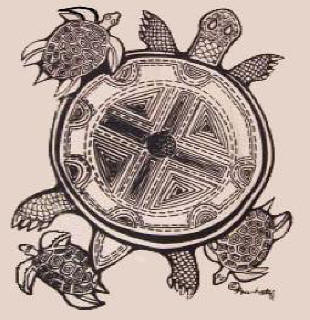 |
LITR 4326
Early American Literature Research Posts 2016 (research post assignment) Research Post 1 |
 |
Ashley Cofer
American Indian Literature
After reading the poem A New Story
by Simon J. Ortiz, I became interested in learning more about the history of
American Indians and how they were treated by white Americans. When I began
researching the history and culture of American Indians, I came across this
website:
http://nativeamericanwriters.com/. I
read that by writing, Native Americans expressed their struggles of feeling less
than human and how they only wanted to find their own voice within the culture
of America. After learning that they wrote about these things, I became curious
about other things they wrote about. I decided to research the origin of
American Indian literature. What other ways, besides writing, could they tell
stories?
While accessing the website for this course, I came across the word
wampum. Wampum is a quantity of small cylindrical beads made by North American
Indians from quahog shells, strung together and worn as a decorative belt or
other decoration or used as money. The course website describes wampum as a
representation of American Indians' nearest equivalent to writing or literacy.
Using the school library, I found articles about wampum. In her article
Wampum as Hypertext: An American Indian
Intellectual Tradition of Multimedia Theory and Practice, Angela Haas offers
another perspective on the use of wampum. She states that wampum serves as a
sign technology that has been used to record hundreds of years of alliances
within tribes, between tribes, and between the tribal governments and colonial
government. This makes wampum more than just a form a literature; it is a type
of unity. In the article, Studies of
Wampum, J. S. Slotkin and Karl Schmitt present data to show that wampum was
around long before the coming of the white man. They use archaeological and
ethno-historical evidence to prove their claim.
Another term I came across on the course website was Lakota winter
counts. Winter counts are pictorial calendars or histories in which tribal
records and events were recorded by Native Americans in North America. Using the
school library, I searched for more information on winter counts. In the article
Lakota Winter Counts: An Online Exhibit,
Danielle Moretti-Langholtz and Buck Woodard discuss some facts they learned from
http://wintercounts.si.edu/. They explain that winter counts were
pictographic symbols that served as mnemonic devices that recorded notable
events in history. In another article, A
Grammar of Time: Lakota Winter Counts, 1700-1900, Barbara Risch declares how
there is much variation in the verbal translations of pictographic winter
counts, which typically only name the winter and provide no apparent clue to the
narrative substance of the event and its relation to other narratives. This
shows that not all interpretations of the art will be the same. This can lead to
very different literature deriving from the same work of art.
Wampum and winter counts were used to represent literature visually. From
these illustrations, many stories have been passed down orally through the
Native Americans. Each creation of wampum and the messages in the winter counts
can be interpreted differently depending on the observer. If I continued
research on this topic, I would want to see how diverse or similar visual
literature is among the different tribes. I am curious about how different
tribes would interpret the same piece of wampum or decipher a winter count.
Work Cited
http://coursesite.uhcl.edu/HSH/Whitec/terms/W/wampum.htm
http://nativeamericanwriters.com/
Barbara Risch. "A Grammar of Time: Lakota Winter Counts, 1700-1900." American
Indian Culture and Research Journal 24.2 (2000): 23. Print.
Haas, Angela M. "Wampum as Hypertext: An American Indian Intellectual Tradition
of Multimedia Theory and Practice." Studies in American Indian Literatures 19.4
(2007): 77. Print.
Moretti-Langholtz, Danielle, and Buck Woodard. Lakota Winter Counts: An Online
Exhibit. 95 Vol. Bloomington: Organization of American Historians, 2009. Print.
Slotkin, J. S., and Karl Schmitt. "Studies of Wampum." American Anthropologist 51.2 (1949): 223-36. Print.
|
|
|
|


